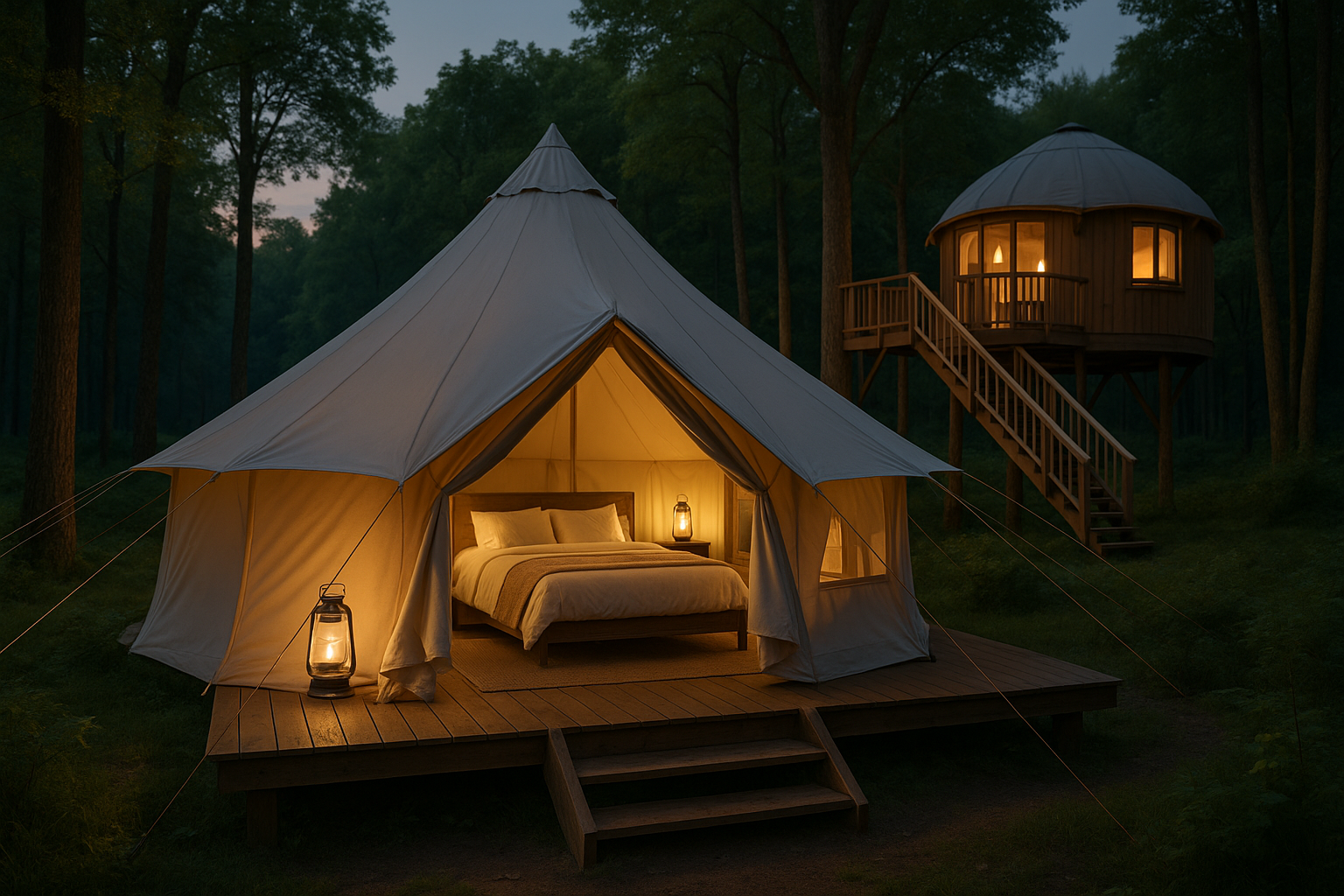Unveiling the Renaissance of Glamping: The Future of Outdoor Hospitality
Glamping, a portmanteau of "glamorous" and "camping," has swiftly emerged as a trendsetter in the realm of outdoor hospitality. What started as a niche trend has now evolved into a mainstream travel style, infusing luxury into the rugged charm of camping. This article delves into the origins of glamping, its contemporary relevance, and the factors contributing to its surging popularity.

Glamping, as we know it today, has its roots in the early 20th century African safaris. Wealthy travelers in pursuit of adventure without compromising on comfort and luxury introduced the concept of tented camps with plush accommodations. Fast forward to the 21st century, glamping has taken on a whole new dimension, with travel enthusiasts seeking out uniquely immersive experiences in the heart of nature, yet desiring the comforts of a hotel room.
The Modern Glamping Phenomenon
The contemporary glamping scene is a far cry from traditional camping. Today, it’s all about bespoke experiences and high-end amenities. From treehouses and yurts to Airstream trailers and eco-pods, the variety of glamping accommodations is as vast as the landscapes they are nestled in. This diversification has been a key driving factor in the widening appeal of glamping.
Recent studies have shown that glamping is more than just a trend; it’s an evolving travel style that taps into the growing demand for experiential travel. Travelers are increasingly seeking unique experiences as opposed to just visiting a destination. Glamping offers just that - an opportunity to connect with nature, explore local cultures, and indulge in outdoor activities, all while basking in luxury.
Advantages and Challenges of Glamping
The allure of glamping lies in its ability to blend adventure and comfort seamlessly. It provides travelers with an alternative to traditional accommodations, offering an opportunity to unplug from the digital world and immerse oneself in nature’s tranquility.
However, like any other travel style, glamping comes with its own set of challenges. Ensuring a sustainable approach to glamping is pivotal, given its inherent connection with nature. Operators must strike a balance between providing luxury and preserving the environment.
Despite these challenges, glamping’s impact on the travel industry is undeniable. It has revolutionized the concept of outdoor hospitality, bringing a touch of sophistication to the rustic appeal of camping.
Interesting Nuggets and Practical Tips
-
Glamping can be a more sustainable travel option when compared to traditional hotels as it typically has a smaller carbon footprint.
-
Always research and choose glamping sites that prioritize eco-friendliness and sustainable practices.
-
While glamping, respect the surrounding environment. Remember, you are a guest in nature’s home.
-
Off-season glamping can offer a unique experience and better deals.
In summary, glamping has breathed a new life into the concept of camping, elevating it to a whole new level of luxury and comfort. Its rise is a testament to the evolving preferences of modern-day travelers who crave unique experiences infused with a touch of glamour. As we move forward, it’s intriguing to imagine how this trend will further shape the landscape of the travel and hospitality industry. Whether you’re a seasoned traveler or a newbie, glamping promises an unforgettable blend of adventure and luxury that is worth exploring.




